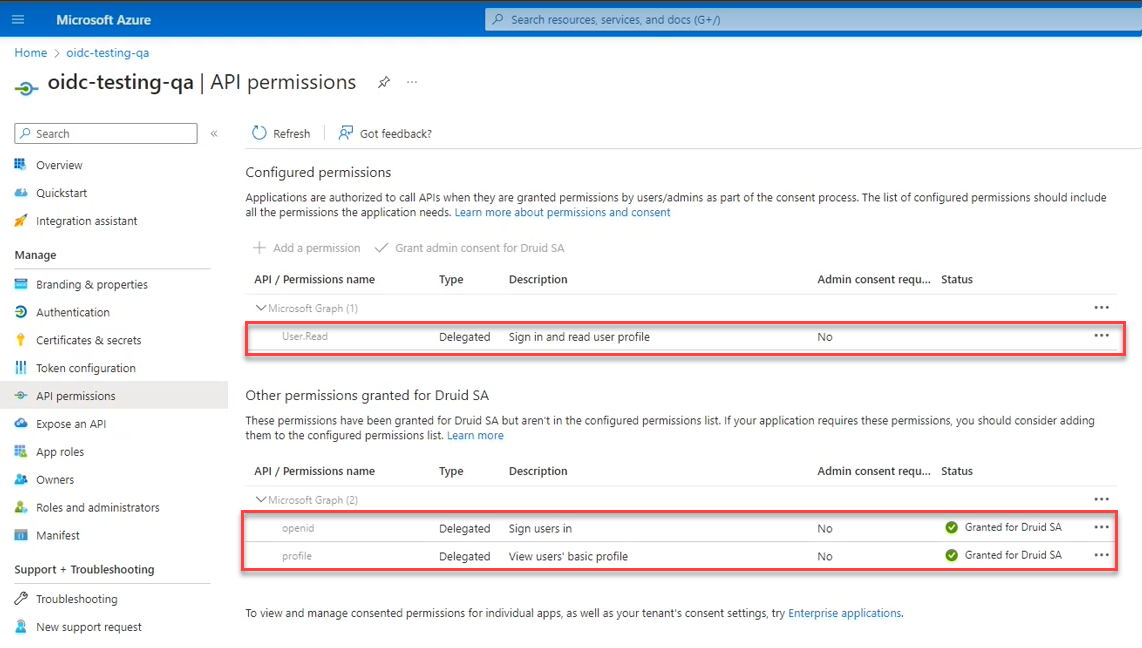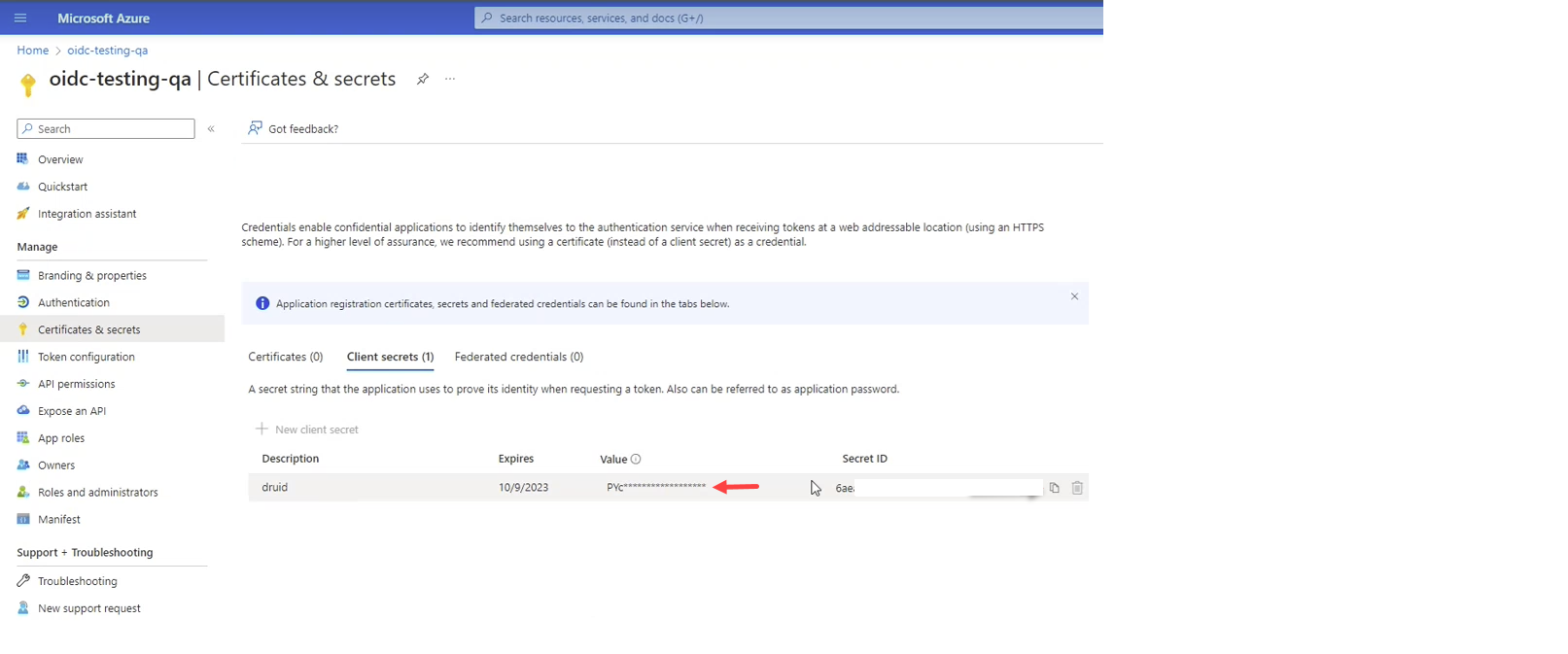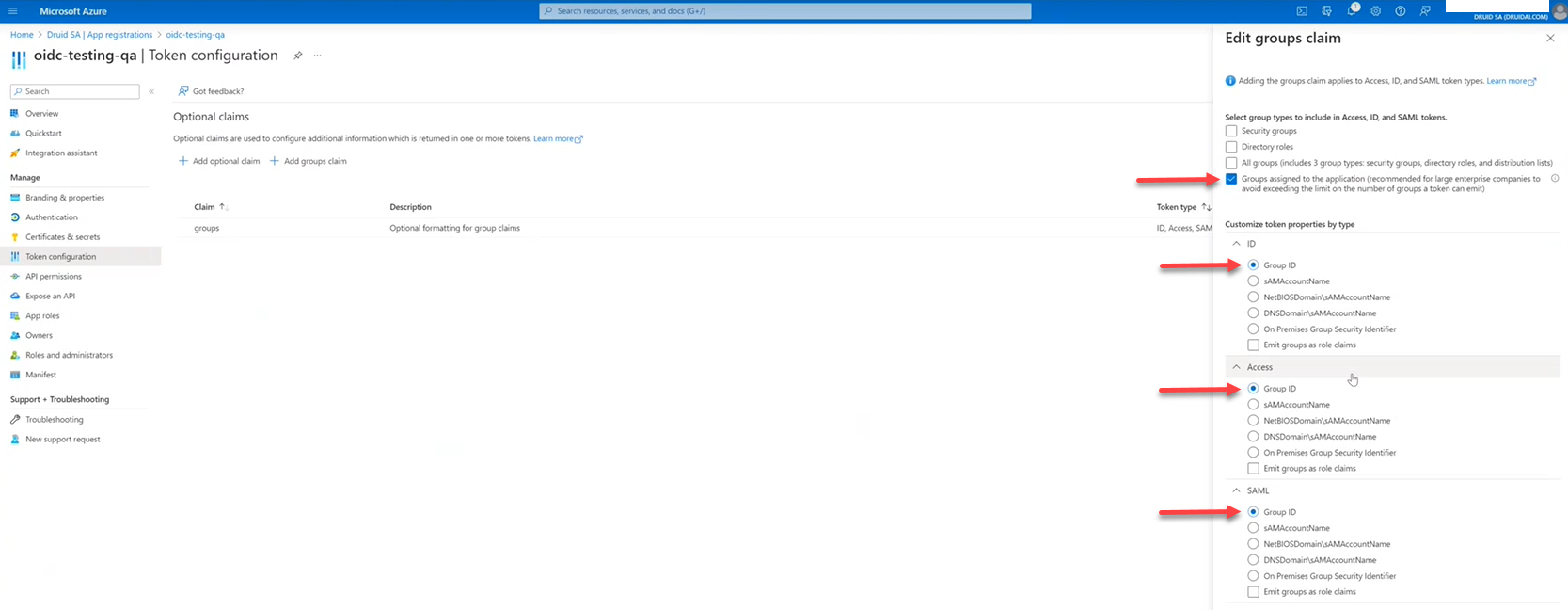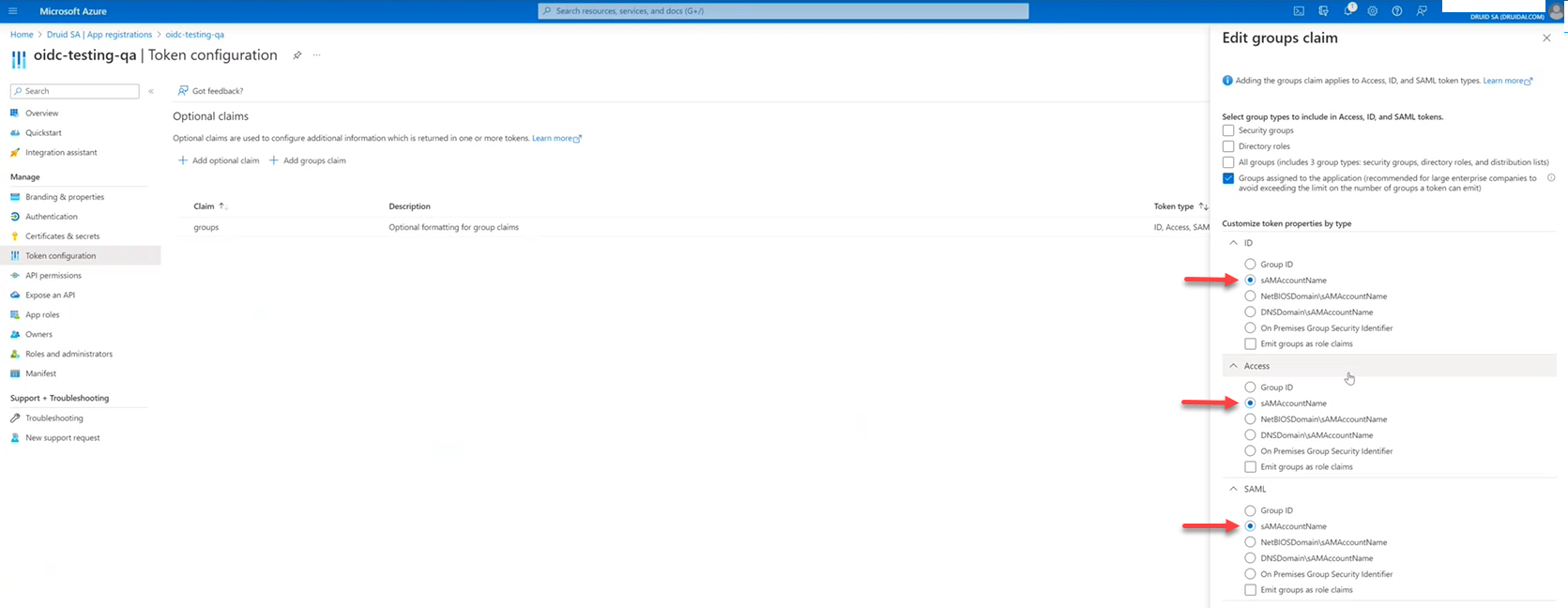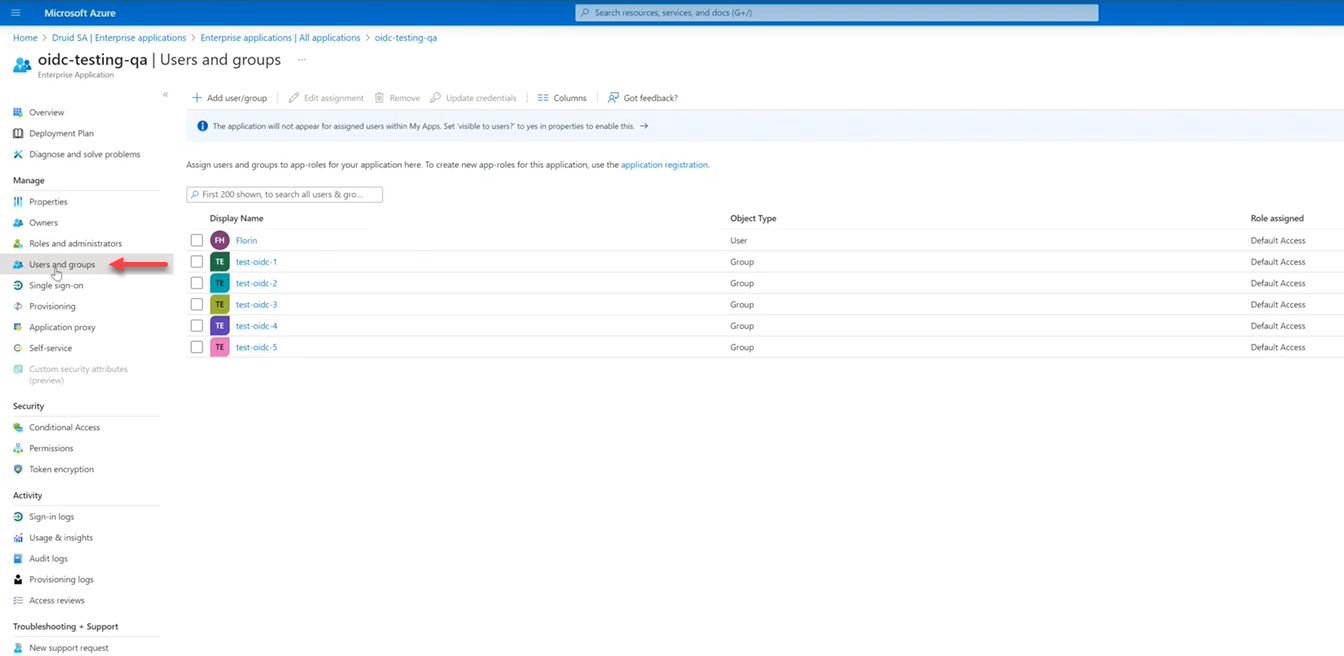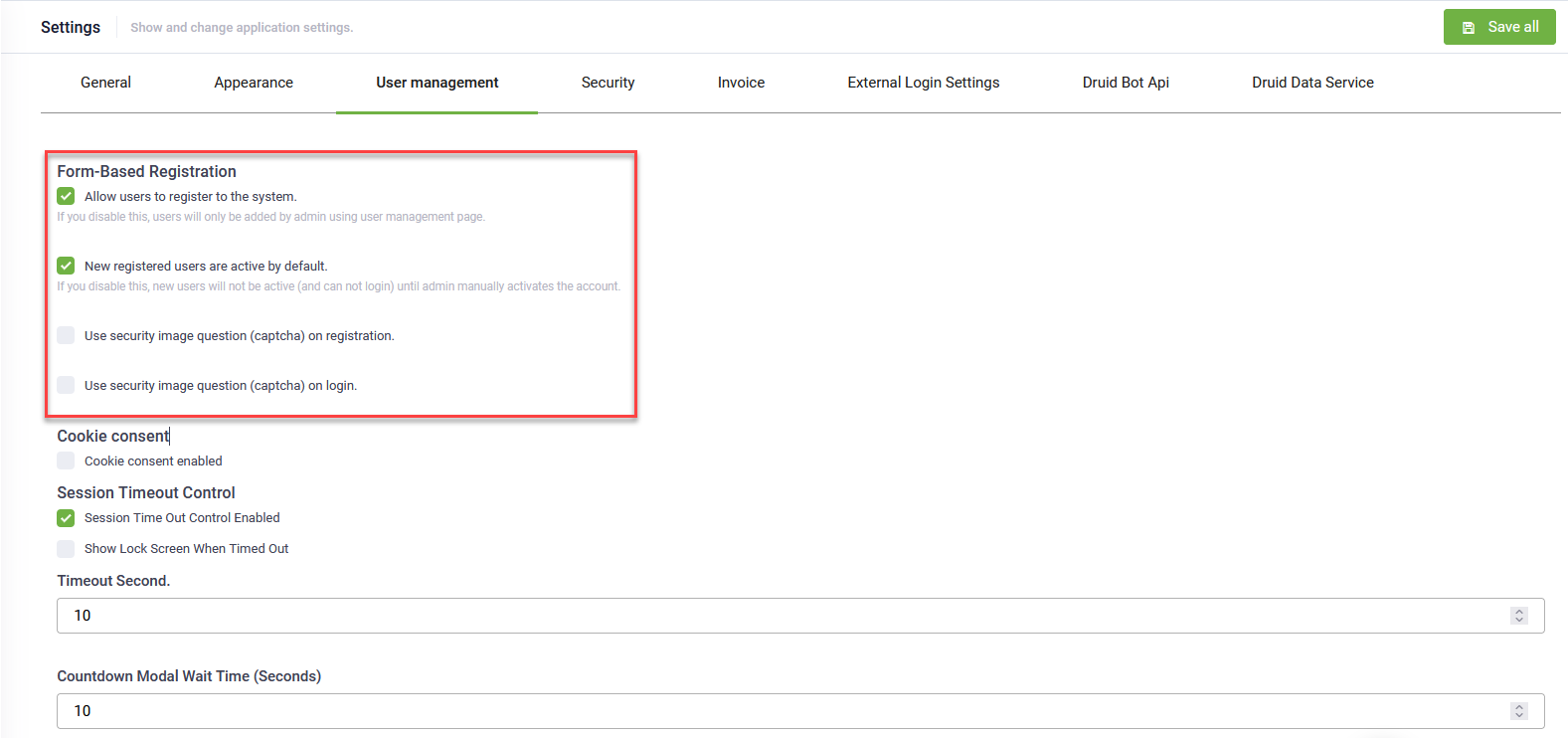Provisioning Portal Users and Single Sign On Authentication via OpenID Connect
At DRUID, we understand that most organizations rely on third-party identity providers to handle authentication while providing their employees to use a single secure means that serves as a universal login to all their accounts (Single Sign-On).
DRUID admins can use an external identity management system that is storing users’ electronic identity to authenticate bot authors in DRUID Portal.
DRUID provides you with the possibility to leverage the use of a unified authentication system(s) by enabling OpenID Connect authentication with an external Active Directory system.
OpenID Connect is an identity layer (a middleware) that sits on top of OAuth 2 and allows easy verification of the user's identity, as well as the ability to get basic profile information from the identity provider (in this case, an external AD system). It allow authors and business users to log into the DRUID Portal with a certified OpenID Provider configured by their DRUID Portal admin.
By using OpenID Connect authentication on your DRUID tenant you ensure that all your AD users logging into the DRUID Portal with their AD credentials are automatically provisioned in DRUID at their first login.
The figure below provides an overview of how DRUID Portal authentication with OpenID Connect works.
This section is for DRUID Portal administrators in charge of managing Portal users.
Step 1. Set up roles for automatically provisioned users
To set up default role(s) to be assigned to automatically provisioned users, from the Administration menu, click Roles. Edit the desired role(s) by selecting Default.
Whenever new users log in DRUID Portal for the first time, they will be assigned with the default role(s).
Step 2. Set up DRUID Portal authentication with OpenID Connect
Prerequisites
- You need to have a DRUID Portal admin account.
- Register DRUID Portal with your OpenID Connect (OIDC) and external Active Directory System.
- In your Active Directory system, configure the OIDC (Authentication area) by adding a web platform and specifying the Druid URL as Redirect URL in the following format:
- In your Active Directory system, configure the OIDC API permissions by adding the User read, openid and profile permissions.
https://<tenancy name>.druidplatform.com/account/login
Example: Redirect URL in Microsoft Azure
Example: API permissions for OIDC in Microsoft Azure
To set up DRUID Portal authentication with OpenID Connect, in DRUID Portal, from the Administration menu, click Settings and in the Settings page, click the External Login Settings tab.
By default, DRUID Portal is not linked to an external AD system. Authors and business users can log into the DRUID Portal using the account credentials provided to them by their DRUID administrator.
Under OpenIdConnect, uncheck Use Host Settings. The OpenIdConnect section expands.
By default, the label of the authentication with OpenId Provider on the login page is OpenId Connect. If you want to change the button label, select Configure login button and in the Login button label field that appears, enter the desired label (text).
In the Email for new user authentication field, enter the email address of your admin(s) who will be in charge of managing user roles and privileges. Every time a new user is automatically provisioned in DRUID Portal, the admin will get an email notification and can review that user’s privileges based on business need to know.
From the Response Type field, select the authorization processing flow to be used. You can use one of the two authentication paths for authentication with OpenID Connect based on how you configured your OpenID Connect:
- Authorization Code Flow. All tokens are returned from the Token Endpoint. The access-token never reaches and is never stored on the user’s machine with the browser/app. To use this authorization processing flow, select code.
- Implicit flow. The access token is stored on the user’s machine with the browser/app. To use this authorization processing flow, select id_token.
Enter the Client ID and Client secret Value valid at the Authorization Server. These are the application/ client ID and secret you get when registering DRUID Portal with your OpenID Connect provider.
Example: App ID from Microsoft Azure
Example: Client secret Value from Microsoft Azure
OpenID Connect use scope values to specify what access privileges are being requested for Access Tokens. Scopes are also used to request that specific sets of information be made available as Claim Values.
In the Scope field, enter the value openid profile to request access to the user’s default profile claims: FirstName, LastName, Phone, Email, MasterId and DomainUsername.
In the Authority field, enter the authority URL, using the following format:
https://<your OpenID Connect provider domain>/<Directory (tenant) ID>/<OpenID Connect version (e.g., v2.0)>
In the Login URL field, enter the full URL to the /authorize endpoint. It has the following format:
https://<your OpenID Connect provider domain>/<Directory (tenant) ID>/oauth2/<OpenID Connect version (e.g., v2.0)>/authorize
You can copy the two URLs for Authority and Login from your OpenID Connect provider configuration. Example: Microsoft Azure AD configuration
If you’re using Request Type code, you also need to provide the Token endpoint url. Example: Microsoft Azure AD configuration
If the Token endpoint does not provide the full user profile details but your OpenID Connect provider offers the UserInfo endpoint to provide additional user profile information, you might want to provide the User info endpoint url to retrieve additional user information.
In the Claims Mapping table, map the claims returned by the Active Directory authorization server (Claim Keys) to DRUID entity fields (Claim values). You can map claim keys to the following claim values:
- FirstName
- LastName
- Phone
- MasterId
- DomainUsername
- DRUID claim values are case-sensitive.
- By default, two claims are preset (user ID / unique_name and the claims schema).
Step 3. Provision users from Active Directory (Optional)
Prerequisites
- You have users assigned to AD groups.
- In your OIDC application, configure the token by specifying the claims you want in the tokens sent to DRUID. Based on your OIDC provider, special configurations might be required for OIDC to get the name of the AD groups. To find out more, we recommend you to consult your OIDC provider documentation.
The next section provides as example the prerequisites for Azure AD.
Azure AD Prerequisites
In Microsoft Azure AD configuration page, under the Manage menu, click Token Configuration and add a group claim. Configure the group claim as follows:
- Select Groups assigned to the application. Due to the group number limit in the token, this option is mandatory for Azure AD.
- For Azure AD, for all token properties (ID, Access, SAML), select Group ID.
- For Azure hybrid AD, for all token properties (ID, Access, SAML), select sAMAccountName.
- To get the name of the AD groups for Azure AD, in the Azure AD application, on the Manage menu, click on Manifest and in the manifest (JSON field) under the Optional claims schema, add the property “cloud_displayname”.
The "sam_account_name" property is automatically added in the application’s Manifest under the Optional claims schema.
- Select the groups assigned to the application. In Azure AD, From the Enterprise applications list, select the application. On the Manage menu, click Users and groups and select the group(s) you want to add to the application. If you have no groups here, add them first and then select the ones you want to send to DRUID.
To learn more about group claims configuration, see Microsoft documentation.
Provision users from AD
To provision users from AD groups they are members of, in DRUID, you have to map the AD groups to DRUID security roles.
In DRUID Portal, from the Administration menu, click Settings and in the Settings page, click the External Login Settings tab. Scroll -down to section Single Sign on group roles mapping.
Enter the name of the AD group (the name of the group as defined in Active Directory) and from the drop down select the DRUID role(s) you want to assign to users who will be provisioned from that AD group. Click the Add button.
Map DRUID roles to as many AD groups as you want making sure that you provide the exact name of the group as defined in Active Directory.
A new user provisioned in DRUID will be assigned with the reunion of associated DRUID roles for all AD groups that user is member of. For example, if a user is member of two AD groups (Druid MFA and Druid Microsoft 365) and the two AD groups are mapped to three DRUID roles in the Single Sign on group roles mapping table, the user will be assigned all DRUID roles from the mapping table.
If the user is member of an AD group for which there is no DRUID role mapped, at provisioning, the user will be assigned the role(s) set as Default, if there are any defined; otherwise the user will be provisioned without any role associated and the administrator will have to manually assign a DRUID role for that user.
Step 4. Allow user registration and activate new accounts
DRUID provides built-in functionality to manage user registrations. To allow new users to register themselves to the DRUID Portal, on the Administration menu, click Settings. In the Settings page, click the User Management tab, and in the Form-Based Registration area, select Allow users to register to the system.
By default, new users are inactive and unable to log in until their DRUID administrator manually activates their accounts.
To activate new self-registered users, select New registered users are active by default.
Save the changes. New users can now register themselves and access the DRUID Portal.
Step 5. Review provisioned users roles and privileges (ongoing task)
New users provisioned in DRUID are automatically assigned with the roles marked as default.
Whenever a new user is provisioned in DRUID Portal, you as the Portal admin get an email notification. You might want to review the user’s assigned roles and make the proper changes based on business need to know (roles and privileges).
Other identity standards and protocols available in Druid
|
Protocol/standard |
What it is |
When to enable |
|---|---|---|
|
LDAP |
An application protocol used for accessing and maintaining distributed directory information services over an IP network. The function of LDAP is to enable access to an existing directory like Active Directory (AD). |
Allow bot authors and business users to log in the DRUID Portal using their AD account credentials.
|
|
WS-Federation (WS-Fed) |
A Microsoft standard used extensively in their applications. It defines the way security tokens can be transported between different entities to exchange identity and authorization information. |
Allow authors and business users to log in the DRUID Portal with a WS-Federation authentication provider like Active Directory Federation Services (ADFS) or Azure Active Directory (AAD). |




